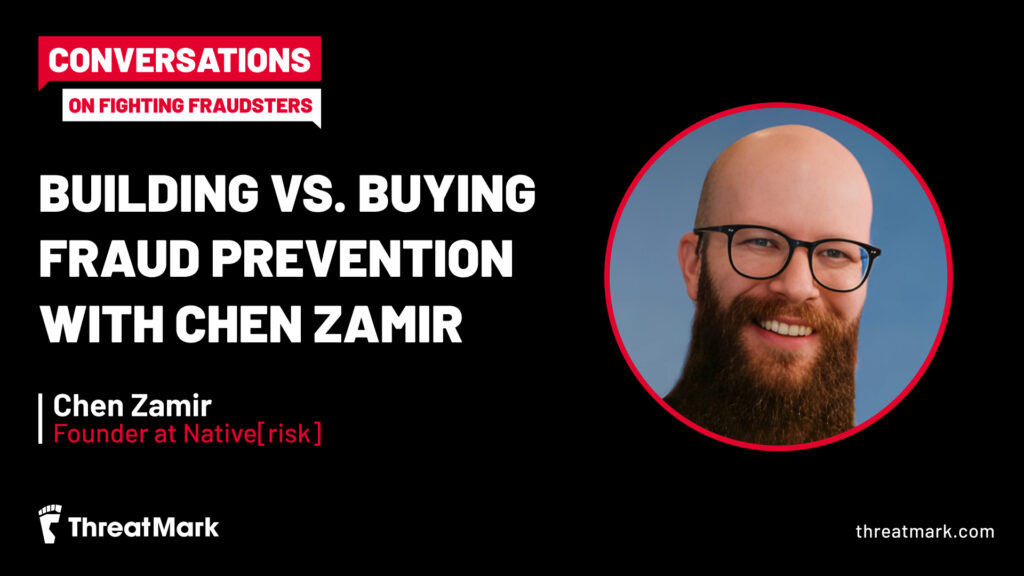
A Buyer’s Guide to Fraud Detection and Prevention Systems
Everyone claims their fraud detection system is the smartest, fastest, and most accurate.
But when you’re the one responsible for actually picking a solution that works, the noise can be deafening—and the stakes couldn’t be higher.
When it comes to fraud detection, a poor decision doesn’t just waste budget. It can leave gaps in your defenses, frustrate customers, and overwhelm your fraud team with false positives or long investigations.
This guide is here to help. If you’re evaluating a fraud detection software for the first time, or rethinking your current setup, here’s what to expect from a modern system that actually reduces losses, scales with threats, and doesn’t burn out your team.
What Is a Fraud Detection System?
A fraud detection system is a technology solution that identifies suspicious or unauthorized activity before it leads to financial loss. In banking, this usually involves monitoring user behavior, transactions, and device signals in real time to catch patterns that point to fraud.
But detection alone isn’t enough. As fraudsters evolve and both customer and regulatory expectations rise, banks also need fraud prevention capabilities. That means tools that not only identify risk but actively stop it by delaying or blocking high-risk actions, mitigating fraud infrastructure, warning users, or alerting fraud teams in real time.
What to Look for in a Fraud Detection and Prevention Tool
Fraud detection and prevention technologies vary widely in design, effectiveness, and relevance to the banking sector. For financial institutions investing in fraud detection software, whether for the first time or as part of a broader modernization effort, it’s essential to assess operational needs, fraud risks, pain points, and long-term goals.
The following factors can help guide a well-informed decision when selecting a fraud detection solution.
How the System Detects Fraud
Fraud detection systems differ not only in accuracy, but also in the types of signals they analyze. Understanding the underlying detection approach is critical when evaluating which solution fits your institution’s risk profile and digital infrastructure.
- Network-based Fraud Detection
Some tools focus on network and device signals, collecting data such as IP addresses, device fingerprints, browser metadata, geolocation, and whether a user is connecting through VPNs, emulators, or anonymization tools. These indicators are useful for spotting high-risk access attempts or synthetic sessions but can often be spoofed by advanced attackers. - Transaction-Level Monitoring
Other systems analyze the transaction data, applying static rules or statistical models to spot irregular payment behavior. This can include flagging unusually high-value transfers, atypical destinations, or changes in payment frequency. Transactional analysis is valuable but often reactive, triggering alerts once the fraud attempt is already in progress. - Behavioral Analysis
The most advanced solutions incorporate behavioral data—monitoring how users interact with banking digital services over time. This includes typing cadence, mouse movements, navigation patterns, and behavioral consistency. Because these signals are difficult for fraudsters to replicate, behavioral intelligence adds a deeper layer of insight, particularly in detecting account takeover, session hijacking, remote access tools, or social engineering. - Multi-Layered Approach to Fraud Detection
Each detection method offers meaningful insight, but as authorized push payment (APP) scams and connected fraud losses continue to rise globally, relying on a single approach has proven insufficient. Financial institutions aiming to reduce losses and stay ahead of evolving threats should prioritize solutions that combine behavioral, transactional, and contextual signals within a unified risk engine. A layered detection strategy improves accuracy and enables timely intervention, preventing fraud before it reaches the customer.
Specialization in the Banking Sector
Many fraud detection tools were originally developed for ecommerce or general-purpose digital environments. While they may be effective at stopping card-not-present fraud or suspicious checkout behavior, they often fall short in the context of modern banking.
Financial institutions face a very different threat landscape. From session hijacking and remote access tools to APP fraud, real-time scam manipulation, and mule accounts, the tactics used against banks are increasingly coordinated, deceptive, and technically advanced.
Effective defense requires understanding the structure of banking sessions, customer behavior, and transaction data. A specialized solution should be able to track risk throughout the entire digital journey, not just at login or payment initiation. That means supporting complex workflows (digital onboarding, multi-factor authentication, payment authorization, or customer self-service) with the ability to detect risk at every stage.
When fraud teams evaluate a solution, they should prioritize vendors that focus on financial services and are equipped to handle the unique operational, regulatory, and threat dynamics of the sector.
Explore the Future of Scam Prevention
Detection, Prevention—or Disruption of Fraudulent Transactions?
Fraud detection and fraud prevention are often used interchangeably, but they serve distinct purposes. Fraud detection involves identifying suspicious activity, often after it has occurred or while it’s underway. Fraud prevention refers to the ability to actively intervene, interrupt the fraud attempt, and prevent losses before they happen.
Some systems detect fraud but leave the response to manual investigation. Others can intervene directly by halting fraudulent transactions, triggering step-up authentication, displaying scam warnings, or routing high-risk sessions to fraud teams for review.
Today’s fraud landscape, however, demands more than detection or isolated intervention. With the rise of social engineering and instant payment fraud, banks need systems that support proactive, real-time fraud disruption—an approach focused on identifying and stopping fraud across its entire lifecycle, before it succeeds.
This means going beyond the moment of transaction. It includes detecting phishing infrastructure early, recognizing signs of manipulation during the customer session, blocking real-time attacks in progress, and tracing stolen funds through mule accounts.
By addressing the full chain of events, fraud disruption enables faster, more effective responses that prevent losses and drive more sustainable fraud reduction at scale.
As fraud tactics evolve, static, rules-based systems are increasingly unable to keep pace. Legacy fraud detection systems struggle with the sheer volume of data generated by organizations today, making it difficult to surface relevant risk signals in time. Hardcoded logic may catch known patterns but often fails to detect new or adaptive fraud techniques—especially those involving social engineering or sophisticated automation. Rule-based detection is also prone to generating false positives, leading to operational inefficiencies and alert fatigue among fraud teams.
Modern fraud detection relies on artificial intelligence and machine learning models that continuously learn from behavioral, transactional, and contextual data. These technologies are essential for analyzing vast datasets and recognizing emerging and complex fraud patterns at speed. Well-trained models can adapt to evolving attack behavior, minimize false positives by learning what “normal” looks like, and detect anomalies early, often making the difference between stopping a loss and reacting too late.
However, performance alone isn’t enough. Banks should look for fraud detection software that provide transparency into how AI decisions are made, including how models are trained, which data sources are used, and how risk is scored. Crucially, institutions must retain control over key decision points, including the ability to override model outcomes and tailor responses to their risk appetite.
Integration with Digital Banking Infrastructure
A fraud detection system must work as part of the broader digital banking ecosystem. Seamless integration with core banking platforms, mobile and web channels, authentication services, and case management systems is essential for effective, real-time protection.
Solutions with robust API capabilities and API-less integration options—such as pre-built connectors, SDKs, or low-code deployment—can significantly reduce implementation time and ease the burden on internal teams.
Equally important is long-term flexibility. As infrastructure evolves, the fraud system should be easy to update, scale, and adapt without requiring major redevelopment or downtime.
Reporting and Analytics to Support Fraud Detection Efforts
Effective fraud management depends on more than real-time alerts. It requires clear visibility into threats, contextual understanding of user behavior, and full control over investigative and strategic workflows.
To support this, a fraud detection system should offer comprehensive, customizable reporting that goes beyond operational response, enabling regulatory compliance, internal governance, and data-driven decision-making. Failure to detect and report fraud can lead to legal penalties and fines for organizations under increasingly strict regulatory requirements.
High-quality analytics help teams understand how and why fraud happens, identify gaps in detection, and continuously refine defenses. Key capabilities to look for include real-time risk scoring, session-level timelines, behavioral insights, and the ability to drill into individual events with full audit trails. Dashboards should align with team workflows and empower faster, more confident responses to emerging threats—one of the key benefits of well-designed fraud detection software.
Scalability and Future-Proofing
Fraud is constantly evolving—and so is the technology used to carry it out. Banks need fraud detection systems that can scale with digital growth, adapt to new attack vectors, and remain effective as both infrastructure and customer behavior change.
When evaluating a solution, assess not only how it performs today but how it’s built to handle what’s coming next. Can it detect and respond to emerging threats like AI-generated phishing or scripted social engineering attacks? Is the architecture flexible enough to integrate future channels or data sources?
A future-proof fraud strategy (one that supports long-term resilience) relies on systems that are not only adaptive, but also grounded in deep fraud expertise and a clear understanding of both today’s challenges and the future realities of the banking landscape.
Explore What’s Next in AI and Fraud
Build or Buy? A Strategic Decision
One of the most important decisions banks face is whether to build their own fraud detection system or partner with a third-party provider. The right choice depends on the bank’s long-term strategy, internal capabilities, and willingness to continuously invest in a highly dynamic threat environment.
Developing an in-house system offers full control over system design, data handling, and feature prioritization. While this path may appear cost-effective over time, it comes with significant hidden costs. Annual maintenance alone can reach 30 to 40 percent of the original build cost, effectively requiring a full reinvestment every few years. It also demands specialized expertise in fraud detection, AI and machine learning, and real-time system architecture—all of which must evolve constantly to stay ahead of emerging threats.
Third-party solutions, on the other hand, offer a faster path to deployment and are continuously updated to reflect new fraud tactics and regulatory requirements. They typically include ongoing maintenance, access to fraud-specific AI models, and the benefit of vendor-led innovation. For banks without dedicated fraud technology teams, this approach can be more cost-effective and easier to scale. The trade-off is less direct control over the product roadmap, as institutions work within the vendor’s defined framework.
There’s no one-size-fits-all answer—but understanding the true costs, requirements, fraud risks, and long-term implications of each fraud detection software option is essential when deciding how best to protect your customers.
With fraud becoming more complex and losses continuing to rise, banks don’t just need a vendor. They need a partner. Someone who understands what it’s like to be on the front line, who knows the pressure of staying ahead of evolving threats, and who brings the tools and knowledge to not just defend, but to actively push back.
ThreatMark is built with this mindset at its core.
Disrupting Fraud at Every Stage of the Lifecycle
At the core of ThreatMark’s approach is a proactive fraud disruption strategy. It enables banks to detect and stop fraud before it succeeds by targeting the full spectrum of threats, from phishing infrastructure and scam manipulation to real-time attacks and mule activity. This lifecycle-based approach reduces losses and strengthens long-term resilience.
Advanced Behavioral Intelligence Purpose-Built for Banking
ThreatMark’s detection engine is powered by AI and machine learning, applied through the Behavioral Intelligence Platform. By combining behavioral patterns, device intelligence, and threat data in real time, it detects anomalies and identifies risk with high precision, even in hard-to-detect scenarios like social engineering and APP fraud. Every layer is tailored to the needs of banks, not adapted from ecommerce or generic platforms.
For banks facing talent or resource constraints, ThreatMark offers pre-trained fraud models that eliminate the need for extensive internal development. This makes advanced detection capabilities accessible, even for institutions without dedicated data science teams.
Making the Right Fraud Strategy Decisions
With fraud losses rising and pressure from regulators and customers increasing, choosing the right fraud detection system has never been more critical. The industry reflects this urgency—global spending on fraud detection and prevention in banking is projected to reach $32.2 billion by 2029.
For financial institutions, the best long-term strategy is one that aligns detection with prevention, enables fast intervention, and adapts continuously to emerging threats. That means looking beyond surface-level features and evaluating how each solution fits your operational model, customer journey, and long-term risk strategy.
At ThreatMark, we help financial institutions move beyond detection to actively disrupt payment fraud and build long-lasting, effective fraud defense strategies. Whether you’re starting with a single capability or implementing a full-stack approach, we’re here to support you every step of the way with technology that’s built for banking and a mindset focused on resilience.
Talk to a Fraud Fighter
Fraud Detection System FAQs
What factors should I consider when evaluating fraud detection systems?
Look for solutions that combine behavioral, transactional, and contextual detection, offer real-time prevention, and are purpose-built for banking. Key considerations include AI explainability, ease of integration, scalability, strong investigation tools, and alignment with current and upcoming regulatory requirements.
What’s the difference between fraud detection and fraud prevention tools?
Fraud prevention refers to the policies and systems put in place to reduce the likelihood of fraud occurring in the first place. Fraud detection focuses on identifying suspicious activity as it happens, so it can be addressed before causing harm. Banks need both to stay ahead of evolving threats.
What is a fraud disruption approach?
A fraud disruption approach focuses on stopping fraud across its entire lifecycle—not just detecting it at the point of transaction. It actively disrupts fraud by identifying early warning signs, intervening in real time, and directly targeting fraud infrastructure and attempts. This includes blocking scam manipulation, stopping potentially fraudulent transactions, and flagging mule activity before funds are lost.
What are the benefits of fraud detection tools for banks?
Fraud detection tools enable banks to identify suspicious activity at an early stage, reduce financial losses, and protect customers from evolving threats. When selected and implemented effectively, they can enhance operational efficiency, lower false positive rates, and support compliance with regulatory requirements. Advanced solutions also offer visibility across the fraud lifecycle, improving response times and informing strategic decision-making.



